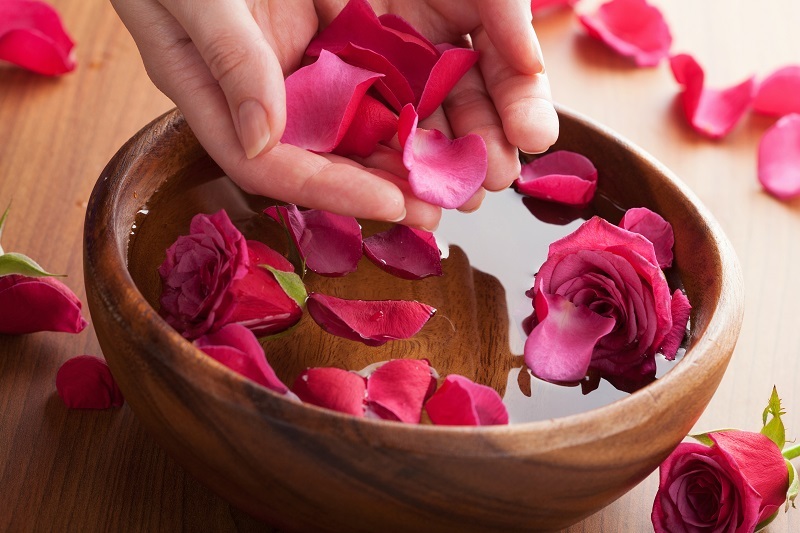The Science Behind Keeping Cut Flowers Fresh for Days
Flower arrangements bring color and life into any space, but anyone who's received a bouquet knows the disappointment of seeing the petals wilt too quickly. So what actually determines how long your freshly cut blooms last? This article dives into the science behind keeping cut flowers fresh--unveiling surprising facts about plant biology, chemistry, and proven strategies to help you enjoy your flowers for as long as possible.

Why Do Cut Flowers Wilt?
The journey from garden to vase is stressful for flowers. Understanding why cut flowers wilt is key to preserving their beauty.
What Happens When a Flower Is Cut?
Cutting a flower severs it from its root system, which immediately interrupts the plant's ability to absorb water and nutrients from the soil. Without roots, flowers rely solely on the water in their vase to maintain cellular functions and turgidity, which is the water pressure that keeps stems and petals firm.
- Water stress: As soon as stems are cut, air can enter the water-conducting tissues (known as xylem), causing air bubbles or blockages called embolisms.
- Bacterial growth: Bacteria multiply rapidly in vase water, clogging the stem and making it harder for flowers to uptake water.
- Nutrient deprivation: Cut flowers no longer receive sugars or minerals, so they start consuming their own energy reserves--leading to quicker deterioration.
The Role of Plant Physiology in Flower Longevity
Transpiration and Water Loss
Flowers lose water through tiny pores on their leaves and petals called stomata. This process, known as transpiration, is essential for normal plant life, but after cutting, it can cause rapid dehydration.
- High temperatures increase water loss by making stomata open wider.
- Some species, like tulips or lilies, are genetically better at retaining water and last longer than delicate varieties like gardenias or poppies.
The Role of Ethylene Gas
Many flowers produce ethylene, a natural plant hormone that speeds up aging and wilting. After cutting, ethylene production can spike due to stress.
- Ripening fruit, cigarette smoke, and decaying leaves produce ethylene, which can further hasten flower decline.
- Certain types, such as carnations and roses, are especially sensitive--while others, like orchids, are less affected.
Best Practices for Extending the Freshness of Cut Flowers
If you want to keep bouquets looking their best, science-backed practices make a big difference. Master the art and science of keeping cut flowers fresh for days with these proven tips:
1. Start with a Clean Slate
The most important step is to use a vase cleaned with hot water and soap to remove any bacteria. Residual germs can quickly multiply and block the flowers' water uptake. Rinse thoroughly to avoid any soapy residue harming your flowers.
2. Trim Stems Properly
- Always cut stems at a 45-degree angle. This increases the surface area for water absorption and stops the stems from sitting flat on the bottom of the vase, which can prevent water uptake.
- Trim stems underwater if possible. This prevents air from entering the stem, which can form destructive blockages (embolism).
- Remove any foliage that will sit below the waterline to prevent rotting and excessive bacterial growth.
3. Use the Right Water Temperature
Most cut flowers prefer room temperature water, but some, such as tulips or daffodils, actually last longer in cool water. Warm water can sometimes help freshly cut stems open up initially, except for bulb flowers, which should always go in cold.
4. Floral Preservatives--Do They Work?
Commercial flower food packets typically contain:
- Sugar (for energy)
- An acidifier (to lower water pH and reduce bacteria)
- Biocides (to suppress microbial growth)
Studies prove flowers last longer with a preservative. If you run out, a homemade substitute can be made by mixing sugar, white vinegar or lemon juice, and a tiny drop of bleach in the vase water.
5. Replace Water Regularly
- Change the water every 2 days to remove bacteria and replenish nutrients.
- Wash the vase and re-cut stems each time for maximum freshness.
6. Control Temperature and Environment
- Keep flowers away from direct sunlight, radiators, or electrical appliances that can dry out or overheat blooms.
- Store bouquets in a cool room at night if possible, as lower temperatures slow metabolic processes and wilting.
Flower Variation: Which Types Last the Longest?
Different species have widely different vase lives due to their structure, water needs, and ethylene sensitivity:
- Long-lasting cut flowers: Alstroemeria, chrysanthemums, carnations, lilies, orchids
- Short-lived cut flowers: Gardenia, poppy, sweet pea, dahlia
Selecting naturally hardy blooms is one of the simplest ways to keep your flower arrangements fresh longer.
Common Myths About Keeping Flowers Fresh
-
A penny in the vase stops wilting:
This stemmed from the idea that copper is an antimicrobial agent. However, modern pennies contain very little copper, and the effect is negligible versus proper cleaning and water management. -
Bleach alone keeps water bacteria-free:
While a tiny drop of bleach can help, too much will harm your flowers. It's best used in combination with sugar and acidifiers, as in commercial flower food. -
Refrigeration is always best:
While cold temperatures slow aging, extreme cold can damage delicate petals. Only store bouquets in a cool--not freezing--place.
Advanced Tips: Harnessing Flower Science Like the Pros
1. Hydration Solutions Used by Florists
Professional florists sometimes use special hydration solutions or even submerge dry or wilted stems temporarily in tepid water to rehydrate. "Pulsing" stems in a sugar-rich solution before arranging can also help maximize bloom longevity.
2. Ethylene Inhibitors
Commercial flower growers use chemicals called ethylene blockers (like silver thiosulfate) to prevent premature aging in transit--though these are not typically available to the home user.
3. Cutting Stems During the Coolest Part of the Day
For garden-cut flowers, harvest early in the morning when stems are most hydrated and have stored up energy from the previous night. Avoid cutting during peak sunlight, when stems will be less turgid.
4. Species-Specific Tricks
- Woody stems (roses, lilacs): Slit or crush the end to increase water uptake area.
- Milky stems (poppies, euphorbia): Immediately sear the cut end in hot water or with a flame to "seal" and stop sap loss, which can otherwise block water absorption.
- Bulb flowers (tulips, daffodils): Keep separate, as they release sap that can shorten the vase life of other flowers.

The Future of Flower Freshness: Scientific Innovations
Modern research on extending the shelf life of cut flowers is leading to increasingly effective methods. Innovations include:
- Genetic engineering to reduce ethylene sensitivity in popular cut flowers
- Eco-friendly preservatives with natural antibacterial compounds
- Improved shipping techniques--such as vacuum cooling and modified-atmosphere packaging--to keep flowers fresher from farm to florist
Conclusion: Science and Care for Beautiful, Long-Lasting Flowers
The science behind keeping cut flowers fresh for days is an intriguing blend of biology, chemistry, and practical care. Armed with scientific know-how, you can dramatically prolong the beauty of your bouquets by:
- Minimizing water loss (by cutting stems and removing extra leaves)
- Reducing bacteria (with clean vases, regular water changes, and correct use of preservatives)
- Managing environmental factors (avoiding heat and ethylene-producing items)
Whether you're arranging flowers from your own garden or enjoying a store-bought bunch, understanding the science of floral longevity will help you savor your floral arrangements for as many days as possible. Next time you receive or gift a bouquet, you'll be equipped with the knowledge to keep it looking fresh and vibrant--science really is the secret ingredient in every lasting vase of beauty!

